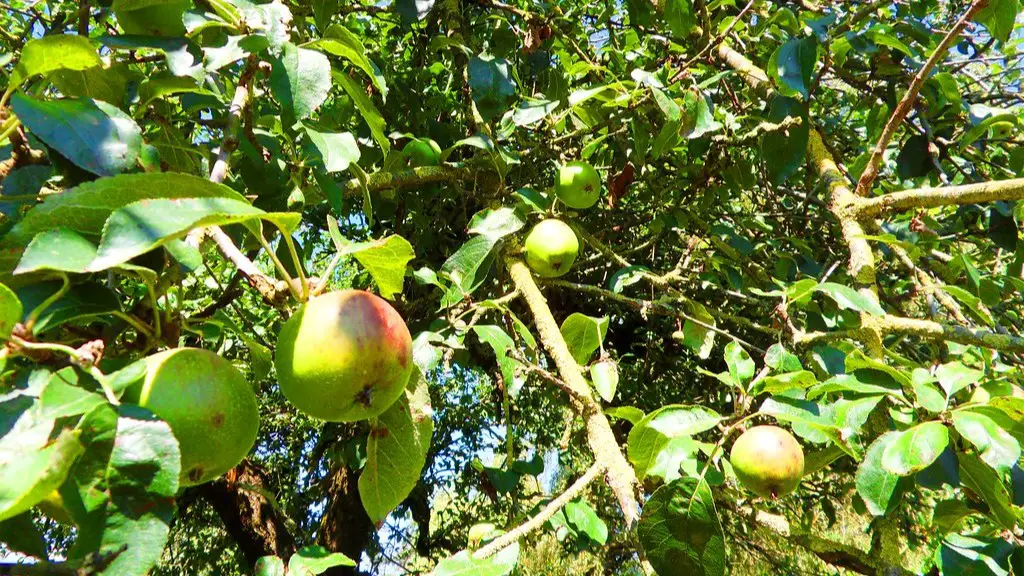Palm Tree Basics
A palm tree is more than just a symbol of paradise. It is also a type of tree that is found across the globe with over 2,500 species in tropical and subtropical climates. Known for their thick and scaly trunks and fronds that have separate segments, palms are fascinating trees that are popular in landscaping and ornamentation due to their unique form and look.
Palm tree fronds are the long, large leaves that cascade from the crown of the tree. This crown is composed of an arrangement of fronds and they can range in size from 1 inch to several feet, depending on the type of tree. All of these fronds grow out of a single spot at the top and spread outward in a fan-like arrangement. They are usually between 2 to 4 feet long and 6 to 8 inches wide.
A healthy palm tree will produce a large number of these fronds, creating a luscious green canopy for shade. This can be seen in many public parks and gardens, where the fronds sway in the breeze and provide relief from hot temperatures. And depending on the variety, sometimes the fronds will be long and feathery or short and rigid.
Function of Fronds
Hanging off the crown of the tree, palm fronds serve a range of purposes. From providing shade to trapping pests, these fronds can be used in all types of shady business. The most obvious purpose of palm tree fronds is as a source of shade. They provide a canopy of Sun protection, meaning they can protect against UV (ultra-violet) rays and help keep nearby plants cool and moist.
Palm tree fronds also help create the perfect home for many different insects and animals. Take the hermit crab, for example. It is a tiny little creature that likes to take shelter beneath the canopy of a palm tree frond and does little to no damage. The fronds help it stay hidden away from other predators and build its home.
Beyond providing shelter, the palm tree frond also has many practical uses. Not only can it be used for crafting and weaving, like wicker baskets, but it also serves as mulch for garden beds and is often used as forage for livestock. Since the palm tree is a source of food, farmers can cut down the fronds and feed their animals without much effort.
Attracts Wildlife
A palm tree isn’t just helpful to humans—it also offers opportunities to other species. Large birds, such as macaws, parrots, and toucans, use the leaves of a palm tree as nesting sites and find themselves a home in the foliage. And small birds and other animals also benefit from the food on these fronds – nuts, fruits, and leaves.
While birds are excited to find a home in a palm tree, other animals don’t do so well in this environment. Insects and other pesky critters often use the fronds to form colonies and even build their homes. This can damage the integrity of the fronds, causing them to become weak and brittle.
For this reason, pest control is recommended whenever an infestation is spotted. Some people trim the lower fronds to deter these insects from living in the palm tree and climbing up the trunk. It is important to always leave a decent amount of fronds for the bird population, as they need a place to rest.
Troubleshooting Issues
In order to keep a palm tree healthy and thriving, it is important to pay attention to the look and feel of the fronds. Brown and drooping fronds are often a sign of problem, and they may be due to incorrect watering or damage from cold snaps. If your palm tree is not looking its best, it is important to assess the situation and determine the cause.
Another issue plaguing palm trees is infestations. If there are too many insects living in your fronds, it can result in defoliation and even death. It is important to identify the source of the problem and take the necessary action to reduce the number of pests in the tree. This may require an application of pesticide.
Finally, regular pruning is essential for keeping palm trees healthy. As the fronds age, they can die and become brittle, so it is important to keep them trimmed on a regular basis. This will help remove any damaged branches and keep the canopy looking lush and healthy.
Adaptations
Though they may appear the same, each species of palm tree has its own adaptation to its environment. Some varieties can be found at higher elevations or drier climates that require special treatment. For example, the Uhl Palm is an arid species that can be found on arid desert islands and has adapted to the conditions to survive. These trees also have longer fronds, allowing them to capture more of the Sun.
The florencea palms are an example of a species that inhabit colder climates and can be found in some parts of the United States. These palms feature short and stout fronds to survive cold temperatures and icy weather. They are sturdy and hardy, meaning they can withstand strong winds and keep their leaves from tearing off.
At the other end of the spectrum, the pigpen palm is a tropical species that is native to Central and South America. They typically feature long, sleek fronds and almost create an umbrella-like shelter over a person. These palms need plenty of sunlight and water to remain healthy and vibrant.
Reproduction
While the reproduction of a palm tree can occur either through flowering buds or through vegetative propagation, the latter is much more common in home gardens and public parks. This process involves taking a rooted piece of the tree and replanting it in a new location. As a result, many of the trees in the same patch will share the same genetics.
This process is great for reviving a sickly tree, as it allows the palm to regenerate itself without the need for harsh chemicals or treatments. Another benefit of palm tree propagation is that it can be done with a variety of species, from tall palms to short palms and from bushy palms to thin palms. This makes it easier to landscape and arrange an attractive ensemble.
Palm tree propagation is also a great way to get a head start on growing a new garden. Instead of planting a seed or a cutting, you can transfer an already established tree. This reduces the amount of time spent in the nursery and increases the chance of success. And since they are so easy to care for and require minimal maintenance, they make excellent additions to any landscape.
Health Benefits
Finally, one of the benefits of the palm tree that is often forgotten is its medicinal value. Throughout history, the leaves and fronds have been used for healing, cooking, and manufacturing in many societies around the world. In India, for example, the leaves are often woven into baskets and used to create doors, beds, and mats.
In addition to being woven, the fronds of a palm tree can also be eaten, as they are packed with nutrients and vitamins. Dates, nuts, oils, and honey are all products derived from the leaves and bark of these trees. They can be used for many dishes and offer a great source of dietary fiber.
On top of adding flavor, the fronds of a palm tree carry a range of benefits for the body. Eating raw or cooked leaves can help treat colds and coughs, as they contain antiviral properties. They can also aid digestion, improve blood circulation, and even prevent the growth of cancer cells.
Maintenance
When it comes to palm tree care, it is important to ensure that the soil is well drained and the tree is receiving plenty of sunlight. The use of mulch or a cover crop can also help insulate against cold temperatures and provide a protective layer from frost. Applying fertilizer in the spring and summer is another key factor in maintaining a healthy palm tree with plump fronds.
In addition to fertilizing and protecting plants from cold, it is advisable to prune the tree once in a while to remove any browning fronds. This will keep the canopy looking healthy and vibrant and help with the overall health of the tree. Finally, it is important to water regularly and thoroughly so that the tree has the necessary moisture to stay vibrant and green.




